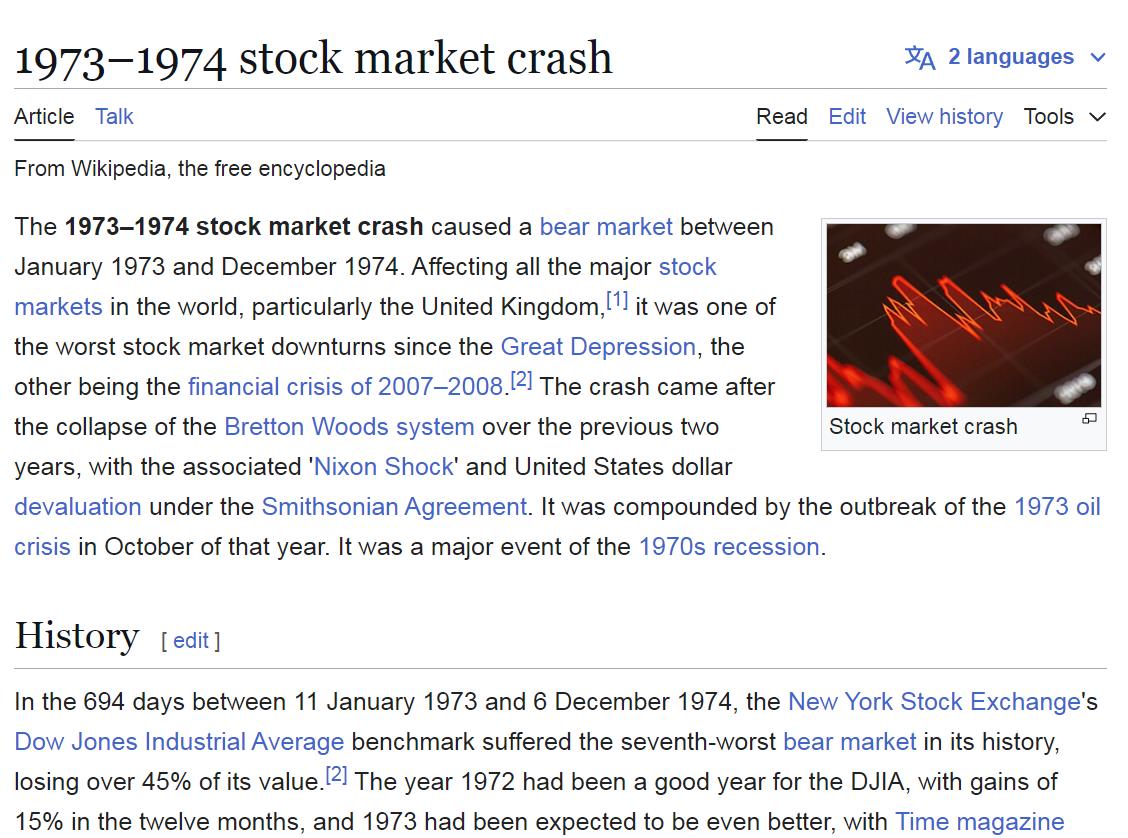
In recent times, economic analysts and investors are drawing alarming parallels between today’s economic environment and the stagflation of the 1970s, a period marked by high inflation, stagnant economic growth, and a significant market crash. Between 1973 and 1975, the Dow Jones Industrial Average plummeted by 50% over just over two years, a stark reminder of how volatile markets can become under similar conditions. Currently, we’re witnessing economic indicators that uncomfortably echo this turbulent era, suggesting that we might indeed be heading toward a similar scenario.
The bond yields and stock market performance today show eerie similarities to the 1970s. During the ’70s, rising inflation led to increased interest rates, which in turn pressured stock valuations as investors sought higher returns from fixed income to combat inflation. Today, we’re seeing bond yields fluctuate in response to inflation fears and monetary policy adjustments, with the stock market reacting in kind. For instance, the recent fluctuations in Treasury yields and the performance of the Dow Jones have mirrored the patterns observed in the 1970s, where economic uncertainty was palpable.
Most of the suckers do not understand the concept of stagflation.
An education they ask for and so they shall receive.
— RealJohnGaltFLA (@RealJohnGaltFla) January 11, 2025
Adding to these concerns, President-elect Trump’s pro-growth policies, which included significant tax cuts and deregulation, might inadvertently increase the likelihood of an economic downturn similar to the ’70s. While these policies were designed to stimulate economic activity, they also expanded the fiscal deficit, which, if not managed carefully, could contribute to inflationary pressures. Historical precedents show that during the 1970s, policy missteps, including loose monetary policy to counteract recessionary fears, exacerbated inflation, leading to stagflation. Trump’s policies, although aimed at growth, could similarly misalign if not balanced with prudent fiscal management, potentially pushing us further down the path toward stagflation.
The sentiment on Wall Street and among economists is one of increasing vigilance. The recent economic data, including job market revisions and persistent inflation, suggest that the economic stability we’ve enjoyed might be waning. The market’s reaction to these signals has been volatile, with investors pulling back from riskier assets, much like the behavior seen before the 1970s crash. Analysts are now urging caution, emphasizing that the ‘play time’ of low inflation and steady growth might indeed be over.
This scenario is particularly concerning as we approach a period where global economic dynamics, supply chain issues, and geopolitical tensions could further complicate the economic landscape. The combination of these factors, alongside domestic policy decisions, could very well steer us into a period of economic hardship reminiscent of the 1970s. Vigilance is not just recommended; it’s essential as we navigate through these uncertain times, with investors and policymakers alike needing to prepare for potential turbulence.
In summary, the current economic climate, influenced by recent policy decisions and global challenges, shows signs that could lead us into a ’70s-style stagflation and market crash. The similarities in yield movements and market performance are too pronounced to ignore, and President-elect Trump’s pro-growth policies, while beneficial in the short term, might add fuel to the inflationary fire if not carefully monitored.
Sources:
https://en.wikipedia.org/wiki/Stagflation
https://en.wikipedia.org/wiki/1973–1974_stock_market_crash
97 views